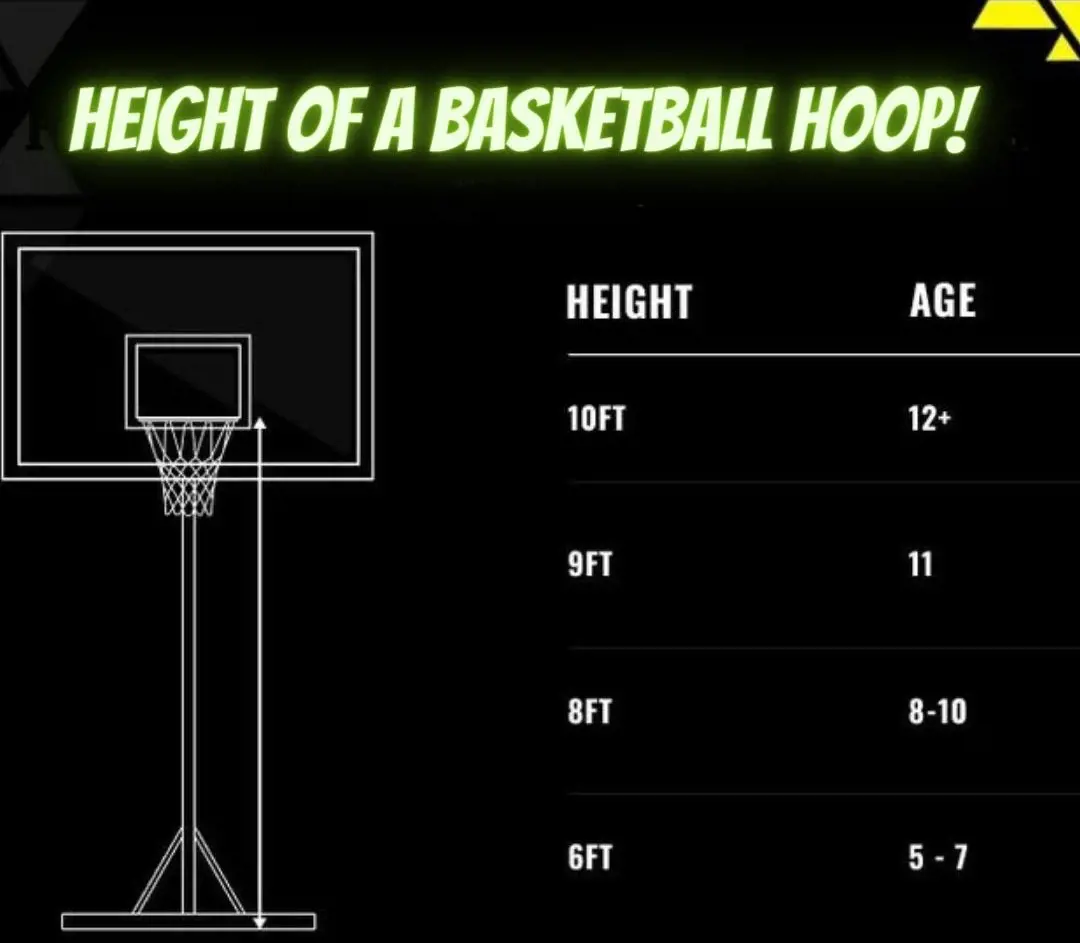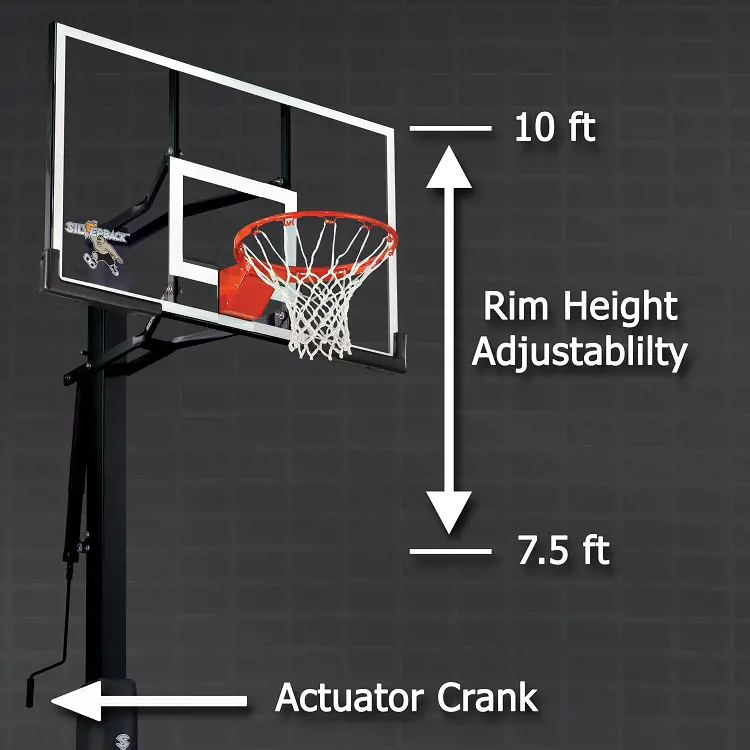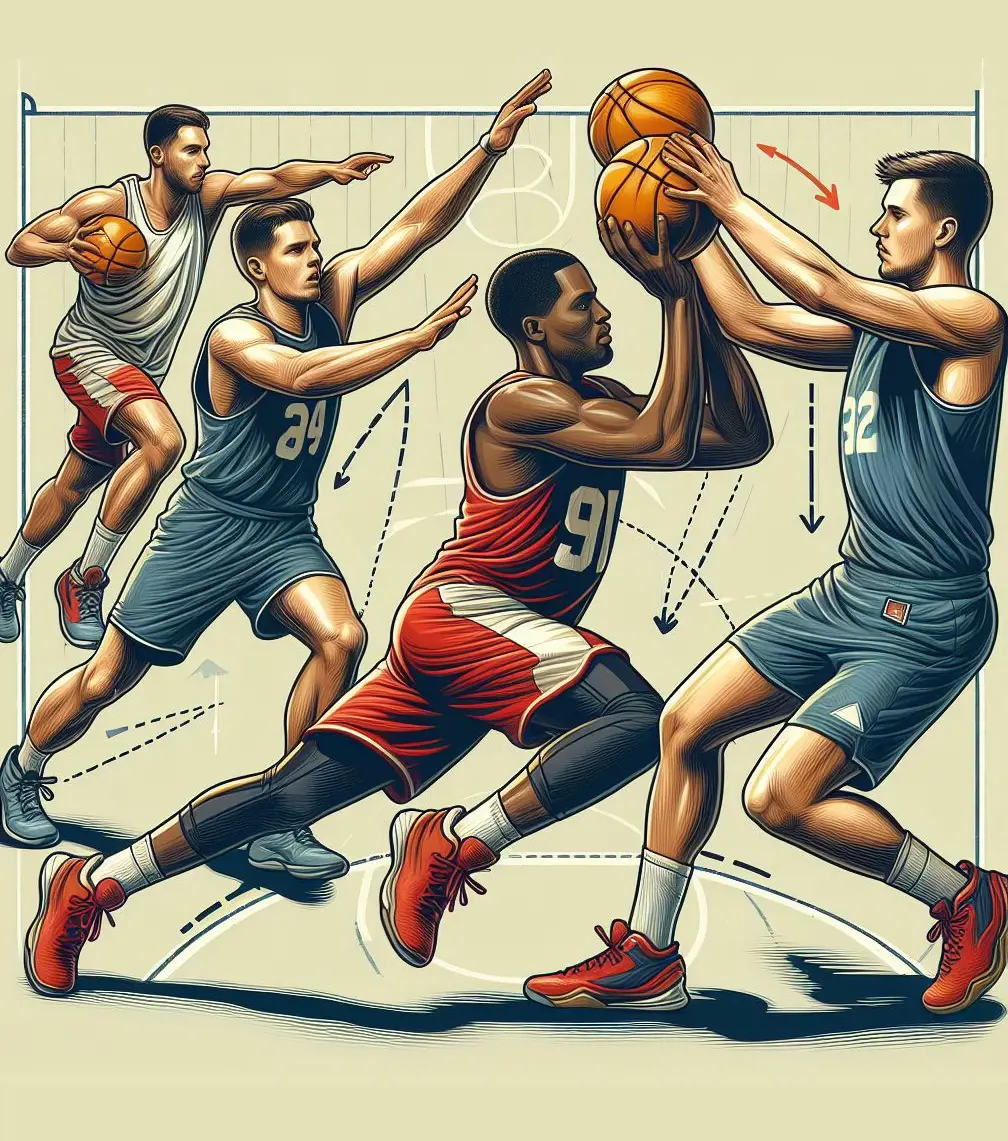
How Tall Is A Basketball Hoop? A standard basketball hoop is 10 feet or 3.05 meters. This height is used by all basketball athletes above the age of 12.
The height of 10 feet is a standard measure for the highschool games as well as in the NBA regardless of the ability of the players. However, for youth leagues, the height of the rim can be minimized in order for young children to reach the rim. The height is measured from the ground to the bottom of the rim.
Watching basketball athletes jump above the rim dunking the ball into it can deceive the audience into misinterpreting the actual height of the hoop. The hoop is 18 inches or 46 cm in diameter and is colored orange for the visibility of fans and coaches. The rim is attached to a net in order to slow the ball down.
The measurements are applied in all professional games including the NBA, FIBA, NCAA, WNBA, and many other organizations. However, attempts of changing the standard length of the hoop have been made in the past but have been unsuccessful.
Why is the hoop exactly 10 feet?
A basketball hoop is exactly 10 feet tall. The height measurement was set by Dr. James Naismith in 1891.
Dr. James Naismith was the person who invented the sport in 1891. The height of the rim was not scientifically measured to be exactly 3.05 meters. Naismith originally placed the peach baskets that served as the first-ever hoop 10 feet high on the railings of the running track at YCMA gym located in Springfield, Massachusetts.

During the initial years when peach baskets were used, a ladder had to be used to extract the ball every time a shot was successful, this was changed later after a metal hollow rim replaced the peach baskets. Similarly, nine athletes per side played the game initially with football as basketball had not been made in the 1890s. This was reduced to five in the later years.
Later, a number of changes were made to the sport including the number of players, the usage of metal rims instead of peach baskets, the installation of nets, and many more. However, the height of the hoop remains the same even after a century since the sport was initially discovered.
Changes in the height of a hoop throughout the years
The height of the basketball hoop has remained the same at 10 feet. However, in 1954 the NBA raised the length of the hoop to 12 feet.
On march of 1954, the lakers played a game against the Hawks with a 12-foot rim instead of a standard one. The NBA ran this test in order to stop George Mikan of the lakers from dominating the game. Mikan was 7 foot tall and had led the Lakers to four league championships in five years.

However, the change only lasted one game as the test concluded that the hoop being taller had an adverse effect on the game as smaller players couldn't take rebounds against taller athletes. The game did not produce good results and hence the length was changed back to standard.
A Dunk slam is an event in the NBA where athletes show their skills and moves when dunking the ball inside the rim. 12-foot rims have been used during slam dunk competitions in the past. Taller players dunk into the larger hoop to show that their height is not the reason for their effectiveness in the game.
There have been a number of events during the Slam Dunk competition where athletes use the 12-foot hoop instead of the standard 10-foot. In a dunk slam competition in 2009, Dwight Howard, a 6-foot 7-inch athlete brought in a 12-foot tall rim and dunked the ball inside showcasing his jump. He wore a superman cloak during the dunk.
Basketball hoops height according to school level
Different heights of hoops are used according to the age and levels of the athletes. College and high school basketball use the standard length whereas elementary schools have different rules.
An elementary school has younger players compared to high school and college athletes. Elementary school players are in their growing years and hence the height of the hoop is adjusted accordingly. For accurate skills to be developed from an early age these changes are made.
Height of hoop in High school basketball
High school competitions in America take place on a standard 10-foot high hoop. Athletes in high school competitions are generally above the age of 12.
The standard rule is that players above the age of 12 have to play in the 10 feet hoop despite their abilities and measurements. Both High as well as middle school athletes play with the standard height of the rim.

The first high school game was played only 14 months after Dr. Naismith invented the sport in Chicago, IL. Morgan Park Academy battled a local YCMA team eventually ending the game with a score of 11-8. The same height has been used ever since.
Height of hoop in Elementary school basketball
Elementary school basketball has varying heights of the rim. The height of the rim is decided by the age of the athlete.
The height is adjusted according to the age of players below 12 years as the association believes in the accurate development of the athlete through the right equipment is necessary to understand and increase the skills from an early age.

For athletes from the age of 5 to 7 years, the average height of the rim is 6 feet or 1.83 meters only. As these children are smaller and can't reach the standard hoop the adjustment is made in order to make it fair for the players.
For athletes from the age of 8 to 10 years old, the average height of the hoop is 8 feet or 2.44 meters. Similarly, for athletes from 11-12, the standard height of the rim is set to 9 feet or 2.74 meters. After the age of 12, the standard height of 10 feet is applicable.
Height of hoop in College Basketball
The standard height of 3.05 meters is used in the college and NCAA games. The standard height for hoops in the NCAA was changed in the past eventually adopting the same standard height.
The standard size is kept as athletes and raw talents are drafted into the NBA after their senior season in college. These athletes are picked and signed by big organizations to play in the NBA and the rules must comply with the NBA to draft the players.

James Naismith was the first basketball head coach at Kansas University after he invented the sport. After nine years of coaching Kansas a debate about the height of the hoop was raised according to an article from Sports Illustrated in 1967.
Phog Allen was the second head coach of Kansas. He suggested that the NCAA should adopt a 12-foot basket eventually. He thought the players would get used to the adjustment and the game would move along more quickly. In 1967 the University of Tennessee raised the hoops to 12 feet for a game. Both teams had 30% failed shots which led the height back to 10 feet.
Women's Basketball has the same height of Hoop as Men's Basketball
The height of the basketball hoop for women's basketball is also 10 feet or 3.05 meters. The length is standard for both male and female basketball athletes.
Although there are a lot of dissimilarities between men's and women's basketball games from the size of the ball to the rules, a common rule in both books is the height at which the rim is located. Although women athletes are comparatively smaller than that male athletes the height of the rim plays an important role in the game.

The average height of a women's basketball athlete is 5 foot 11-6 foot. This results in fewer athletes grabbing the rim and dunking the ball inside, which eventually leads to a less entertaining competition.
According to the Chicago Tribune, Elena Delle Done presented her views on lowering the height of the hoop. Done tweeted her perspective on how this change would lead female players to display more of their athleticism and attract more fans.
For her tweet, Elena received both positive as well as negative responses from the audience. Further tweets were sent out by the athletes defending her perspective towards the height of the hoop in women's basketball. Other athletes have presented their views by retweeting the tweet as well.
The first WNBA game was held in 1997 and the first dunk by a female was in 2002 performed by Lisa Leslie. For now, the standard height of the rim has not been changed and still remains 10 feet for both males as well as female basketball athletes.







